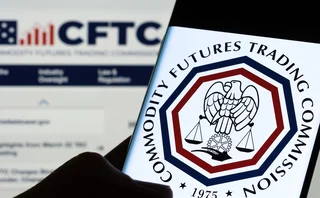
Back in business
Merger and acquisition activity is picking up strongly in Europe, with a flurry of deals completed in the first half of the year. What role have equity derivatives played in the transactions completed so far? Patrick Fletcher reports
After a three-year drought, big-ticket mergers and acquisitions (M&A) are back on the table in Europe. Bankers are predicting a surge of deals, while rumour merchants have worked overtime trying to second-guess the market. PepsiCo, for instance, was rumoured to be looking at French food giant Group Danone, since denied by both parties, while EMI is thought to be considering a bid for Warner Music. What is certain, however, is that equity derivatives are likely to play an important part in any M&A activity, as well as other areas of corporate strategy.
Global M&A volumes in the first half of 2005 rose by 39% compared with the corresponding period of last year, according to data from analytics and market data provider Dealogic. Europe recorded a 47% increase, with several high-profile deals – such as Italian bank UniCredito's purchase of Germany's HVB for $18.6 billion, and wine and spirits manufacturer Pernod Ricard's acquisition of Allied Domecq for $17.8 billion – helping push volumes up to $463.5 billion.
Derivatives can be a useful tool for firms looking to make an acquisition, particularly when it comes to building a stake in a target company. Bulk buying of stocks in the open market can attract attention and affect the share price of the target firm. There are regulatory issues too. In the UK, if a firm makes an acquisition that involves 3% or more of a company's outstanding stock, the purchase must be disclosed to the market. This applies to derivatives holdings that physically settle in the stock, but companies can build up an interest in a company through cash-settled derivatives without disclosure. "Derivatives are mostly used to build small positions without attracting too much attention before entering into discussions with the target," says Thibaut de Gaudemar, head of the European equity-linked solutions group at Credit Suisse First Boston (CSFB) in London.
Disclosure aside, derivatives offer increased flexibility when it comes to building up a stake in another company. Last November, for instance, Colorado-based Liberty Media Corporation entered into an equity swap transaction with Merrill Lynch involving 84.7 million voting shares of Rupert Murdoch's media conglomerate, News Corporation.
Under the terms of the transaction, Liberty obtained exposure to the voting shares of News Corp through a six-month total return swap with Merrill Lynch, which bought the shares in November last year. The firm hedged its exposure by putting in place equity collars expiring in 2006 on 80 million shares. The collars had a floor price of $14.95 per share and a weighted average ceiling price of around $20.40 per share. Liberty also had the option to purchase the shares, subject to completion of News Corp's reincorporation from Australia to Delaware in the US. At the time, Liberty held a 9.15% stake in News Corp's voting shares and a 22% stake in non-voting shares.
In December, the company terminated the swap, taking delivery of 92 million voting shares (comprising the 84.7 million shares plus a further 7.3 million shares from another total return swap with Merrill) and delivering 86.9 million non-voting shares, giving Liberty an 18% voting stake in News Corp.
The revelation of the swap transaction provoked a quick reaction from News Corp, which announced a 'poison pill' shareholder rights plan in November, giving all shareholders the right to buy additional shares at half price – up to a maximum of $80 for each share held – if any group acquires a 15% stake in the company. However, the plan was 'grandfathered', meaning it doesn't affect current stock holdings, including Liberty's transaction. If the US firm increases its holding by a further 1%, the rights issue can be triggered.
Greater flexibility
Importantly, using derivatives structures provides companies with greater flexibility in M&A transactions. One example is the repackaging of equity-linked assets issued by UK oil producer BP following its acquisition of Russian oil firm TNK in September 2003. BP, which ran the acquisition itself using its internal M&A team, paid $2.6 billion in cash to Russian business conglomerate Alfa Group and Access-Renova (AAR) for its stake in TNK, together with three annual tranches of $1.25 million in BP shares.
However, the Russian businesses preferred cash to BP stock. As a result, Deutsche Bank bought the obligations from AAR and repackaged it in note form, selling the product to external investors. "Historically, corporate derivatives was about taking some risk and managing it in your books, which created significant constraints on what could be done. This is why the big collars were done in the US, because the deeper, more liquid markets allow you to hedge more than you can in Europe," says Serge Marquie, global head of the structured equity transactions group at Deutsche Bank in New York.
The BP-TNK deal, however, was sold to seven investors, freeing Deutsche Bank's books. "The transaction was risk managed temporarily in our books, but because of its size, nearly $4 billion, the risk relating to the transaction was syndicated in a pool of risk-takers, who were happy to spend time with us to see what the risks were and to be paid a good price to be taking part. Syndication is really setting a trend in the corporate derivatives world," he says.
Perhaps surprisingly, the introduction of International Financial Reporting Standards (IFRS) in January has caused corporates to consider making greater use of derivatives in M&A transactions. One of the basic tenets of IFRS is that derivatives should be marked to market. However, there are exceptions. One revolves around 'contingent contracts in consideration of business combinations' – essentially M&A transactions. Another is own-share transactions, affecting employee share option programme (Esops) hedging and share buybacks.
This allowance for contingent considerations allows corporates to be more flexible when dealing with M&A negotiations. "When you've got cash products – shares or bonds – you have essentially linear payouts. But with derivatives, you can get non-linear payouts, tax deferral, deferred payouts, or payouts contingent on the exchange rate or future share prices. It's a very flexible toolset," says Clarke Pitts, a managing director at JP Morgan in London. "What IFRS has brought to us is very clear and consistent rules for accounting for these contingent payouts, which are, by and large, pretty fair. There are some anomalies, but they are now widely understood and widely symmetric for countries under IFRS."
Having to mark-to-market was a big disincentive to corporate derivatives use, adds Pitts. "The fact that contingent contracts in consideration of M&A are now excluded from profit and loss statements makes them a lot more attractive."
The exemptions on contingent contracts could cover a range of different scenarios. "We have seen situations where an acquirer may want to take out a major stakeholder in a target early and then go after the residual. What you might do is take that stake out at the current market level, but enter into a contract that would pay the difference between that price and the ensuing price paid to residual shareholders if that price is higher," says Simon Emery, an accounting specialist at JP Morgan in London. However, he notes that to qualify, these arrangements would have to be embedded into the contract from the beginning, rather than negotiated as an aside to the offering.
In fact, the use of contingent contracts for mergers is moving back into fashion, says CSFB's de Gaudemar, who notes that he is involved in some discussions on contingent value rights (CVRs). CVRs were used fairly extensively in the 1990s in mergers such as France Télécom/Equant, Merrell Dow/Marion Labs, BNP/Paribas and Allianz/AGF. CVRs are obligations issued to shareholders during an acquisition, which guarantee them a consistently valued stake in the surviving company. Generally, this involves paying the difference between a predetermined price floor and the average market price on the CVR's expiry.
During France Télécom's acquisition of Dutch communication infrastructure company Equant in 2001, France Télécom wanted to acquire a majority stake but keep an independent listing for its Dutch target, requiring it to maintain a large free-float. However, it was wary of angering Equant's minority shareholders and used CVRs to persuade them to keep their shares rather than demand a full cash offer.
More recently, in August this year, UK-based telecoms company Cable & Wireless (C&W) acquired Energis, a private UK fixed line operator, for £594 million in a deal advised by JP Morgan Cazenove. In the third year following the completion of the deal, C&W will pay up to a further £80 million to former Energis shareholders, dependent on C&W's share price. For every penny the price is above the price at this year's annual general meeting (135p), the firm will pay £1.25 million to Energis shareholders. Although C&W wouldn't comment on the precise reason for the clause, the Energis chief executive will join the board of C&W, so the deal creates a significant incentive for him to help the firm perform as a merged entity.
CVRs fall into two main categories: where the reference entity is the combined company, and where the reference entity is the target company. "In the first instance, the objective is to reduce the acquisition premium and close the valuation gap, on the basis that the acquirer is quite confident that the merger will be successful. In the second, the objective is to encourage minority shareholders to retain their shares to reduce the dilution of the acquirer," says CSFB's de Gaudemar. The C&W deal is an example of the former, while the France Télécom/Equant transaction is an instance of the latter.
The instruments earned a reputation in the 1990s for proving to be extremely costly. In 1991, Dow Chemical paid out $1 billion when the CVRs it issued to Marion Labs shareholders on the merger of Marion with Merrell Dow, Dow's pharmaceutical arm, had to be settled after the shares in the combined entity failed to perform. "CVRs are often misjudged," says de Gaudemar, "but they need to be structured properly. Having a CVR on 100% of the float of the target is not a good idea, because if there is inadequate risk management, the issuer can be exposed to a fall in its, or the target's, share price. This risk, however, needs to be compared with the additional premium the acquirer would have had to pay if it had not used CVRs."
Options fix
Disputes over valuations can also be resolved through writing options, says Deutsche Bank's Marquie. The bank recently worked with two European companies involved in a joint venture. One company wanted to buy the other out, but there was a disagreement over the price. To resolve this, the purchasing company agreed to grant options on its own shares to the other company and then paid a price at the lower end of the valuation scale for the company's stake in the joint venture. "If you buy an asset cheaply, the extra value will be instantaneously reflected in your own shares. So by granting options on your shares, this common dispute can be resolved easily," says Marquie.
Elsewhere, IFRS has also made using derivatives in Esops hedging much more attractive to corporates. The traditional method of hedging Esops was to simply buy shares, which is expensive and ties up regulatory capital. However, corporates pursued this avenue because, under UK Gaap, buying options meant amortising the premium paid through earnings, causing profit and loss statements to fluctuate unnecessarily. "Corporates ended up not buying options, not because the economics weren't compelling, but because the accounting made it very unattractive," says JP Morgan's Pitts.
Now, under IFRS, the treatment of option hedging schemes for Esop schemes has changed. "If a trade is physically settled, it directly affects the equity account without any impact on the profit and loss. That triggered recent activity on hedging stock option plans. Until then, corporates didn't hedge their Esops with derivatives because the premium paid for the call would have been a charge on the profit and loss," says CSFB's de Gaudemar.
Outside of this area, many corporates have spent the year restructuring their balance sheets to deal with IFRS changes. "That's where we're seeing most of the developments in equity derivatives this year," says Russell Schofield-Bezer, head of corporate derivatives marketing for northern Europe at JP Morgan in London. "There has been a significant amount of equity derivatives products designed to help corporates and financial institutions with respect to their IAS 39 changes."
However, due to the perceived lack of transparency in the derivatives market – not to mention the stigma still attached to using derivatives – most corporates are still reluctant to make full disclosure on their derivatives transactions beyond the minimum requirements stipulated by regulators.
The question of disclosure has once again come to the fore following Deutsche Bank's dealings with Banca Popolare Italiana (BPI). BPI has been engaged in a takeover battle with ABN Amro for rival Italian bank Antonveneta. To shore up its capital base, BPI sold off some minority interests in unquoted banking subsidiaries for e1.08 billion to Deutsche Bank, Dresdner Bank and Italian investment company Earchimede, with Deutsche taking the largest stake.
This would be unremarkable, were it not for the discovery that BPI has the option to buy back its stakes in a year's time at the price they were sold, which may contravene Italian banking rules, according to reports. These rules state that such sales have to be permanent to count towards core capital. The deal is further complicated by the revelation that the sale price appears to overvalue the assets – for instance, Deutsche paid e183 million for 10% of Cassa di Risparmio di Bolzano, a local mutual savings bank – a similar-sized stake of which sold last year for only e79 million. This could indicate that the purchasers are expecting to sell the shares back after the year is up.
In the meantime, Deutsche is collecting a reputed e75.6 million in fees for the facility. Deutsche's only communication on the matter is to state that it is "comfortable with every aspect of this transaction and will continue to co-operate with the authorities". Meanwhile, BPI, whose takeover bid was suspended by Italian securities regulator Consob in July, is being investigated by Italian prosecutors for its actions linked to the takeover battle.
Only users who have a paid subscription or are part of a corporate subscription are able to print or copy content.
To access these options, along with all other subscription benefits, please contact info@risk.net or view our subscription options here: http://subscriptions.risk.net/subscribe
You are currently unable to print this content. Please contact info@risk.net to find out more.
You are currently unable to copy this content. Please contact info@risk.net to find out more.
Copyright Infopro Digital Limited. All rights reserved.
As outlined in our terms and conditions, https://www.infopro-digital.com/terms-and-conditions/subscriptions/ (point 2.4), printing is limited to a single copy.
If you would like to purchase additional rights please email info@risk.net
Copyright Infopro Digital Limited. All rights reserved.
You may share this content using our article tools. As outlined in our terms and conditions, https://www.infopro-digital.com/terms-and-conditions/subscriptions/ (clause 2.4), an Authorised User may only make one copy of the materials for their own personal use. You must also comply with the restrictions in clause 2.5.
If you would like to purchase additional rights please email info@risk.net
More on Regulation
Foreign banks want level playing field in US Basel III redraft
IHCs say capital charges for op risk and inter-affiliate trades out of line with US-based peers
CFTC’s Mersinger wants new rules for vertical silos
Republican commissioner shares Democrats’ concerns about combined FCMs and clearing houses
Adapting FRTB strategies across Apac markets
As Apac banks face FRTB deadlines, MSCI explores the insights from early adopters that can help them align with requirements
Republican SEC may focus on fixed income – Peirce
Commissioner also wants a revival of finders’ exemption, more guidance for UST clearing
Streamlining shareholding disclosure compliance
Shareholding disclosure compliance is increasingly complex due to a global patchwork of regulations and the challenge of managing vast amounts of data
Banks take aim at Gruenberg’s brokered deposit rule
Regulatory lawyers question need to reverse 2020 rulemaking just four years later
Time running out to backload Emir derivatives reporting
Significant slice of legacy trades still not ready for new formats, as October 26 deadline looms
Gensler to stick to Treasury clearing timetable
SEC chief promises to keep up the pressure for done-away trades







